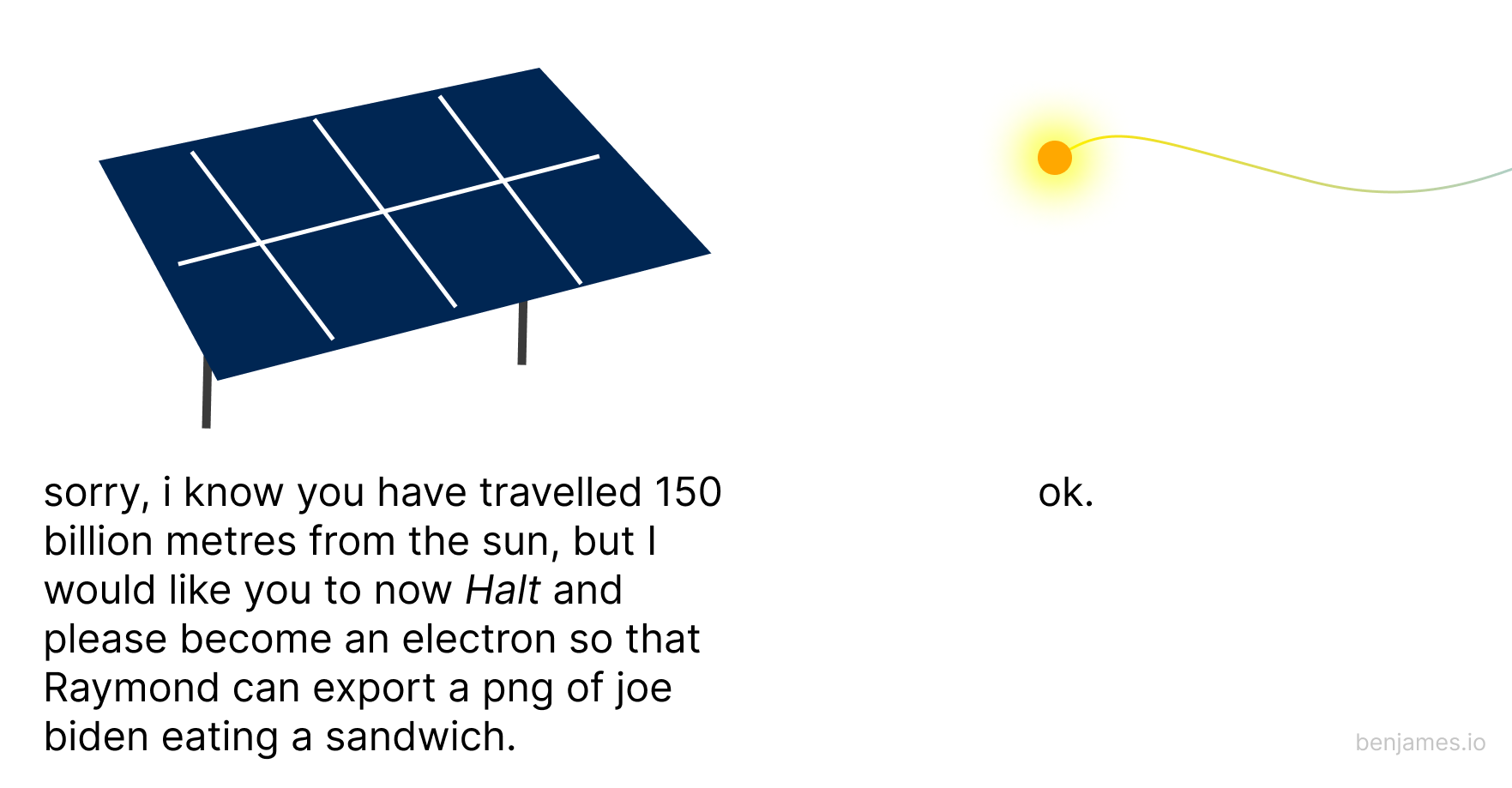The future is off-grid solar

I’ve read some of the thoughts in this post via Low-Tech Magazine especially around the DC/AC/DC conversion being pointlessly lossy. However, this is the first I’ve read of being able to use excess solar power to create other forms of energy.
[S]olar deployment is accelerating at breathtaking speed. Most of the world’s solar power was installed in the past 30 months. In fact, China installed more solar in 2023 than the US has installed in history.
In the UK in 2024, I can go online and buy a solar panel with the same dimensions as a fence panel, for only double the cost. In five years, the cost of solar will have halved again.
[…]
Solar will saturate the power grid, but that doesn’t mean that we’ll stop building it. It just means that we’ll use it off-grid.
[…]
The cost of solar energy in a sunny place is trending towards virtually-free.
This is solar’s opportunity to not just displace electricity supply, but also primary energy supply. Rather than simply supplying energy in the form it’s consumed (electricity), intermittent solar is so fricking cheap that it could manipulate atoms into fuels for subsequent consumption.
We’re talking about using solar to create synthetic kerosene for planes, clean ammonia for fertiliser, clean methanol for shipping, and maybe even synthetic natural gas for general purpose use.
These synthetic and ‘green’ fuels all rely on green hydrogen as a base ingredient. Green hydrogen is extraordinarily expensive to produce, and the only cost-competitive way to make it is off-grid solar.
[…]
Taking solar off the grid also has a few other major cost advantages. If you are ripping solar straight into a DC application, you can skip the costs and efficiency losses of inverting that power into AC. If you lose most of the balance of plant, power electronics, and the paperwork of a grid connection, you’re getting really cheap and fast.
Source: Ben James